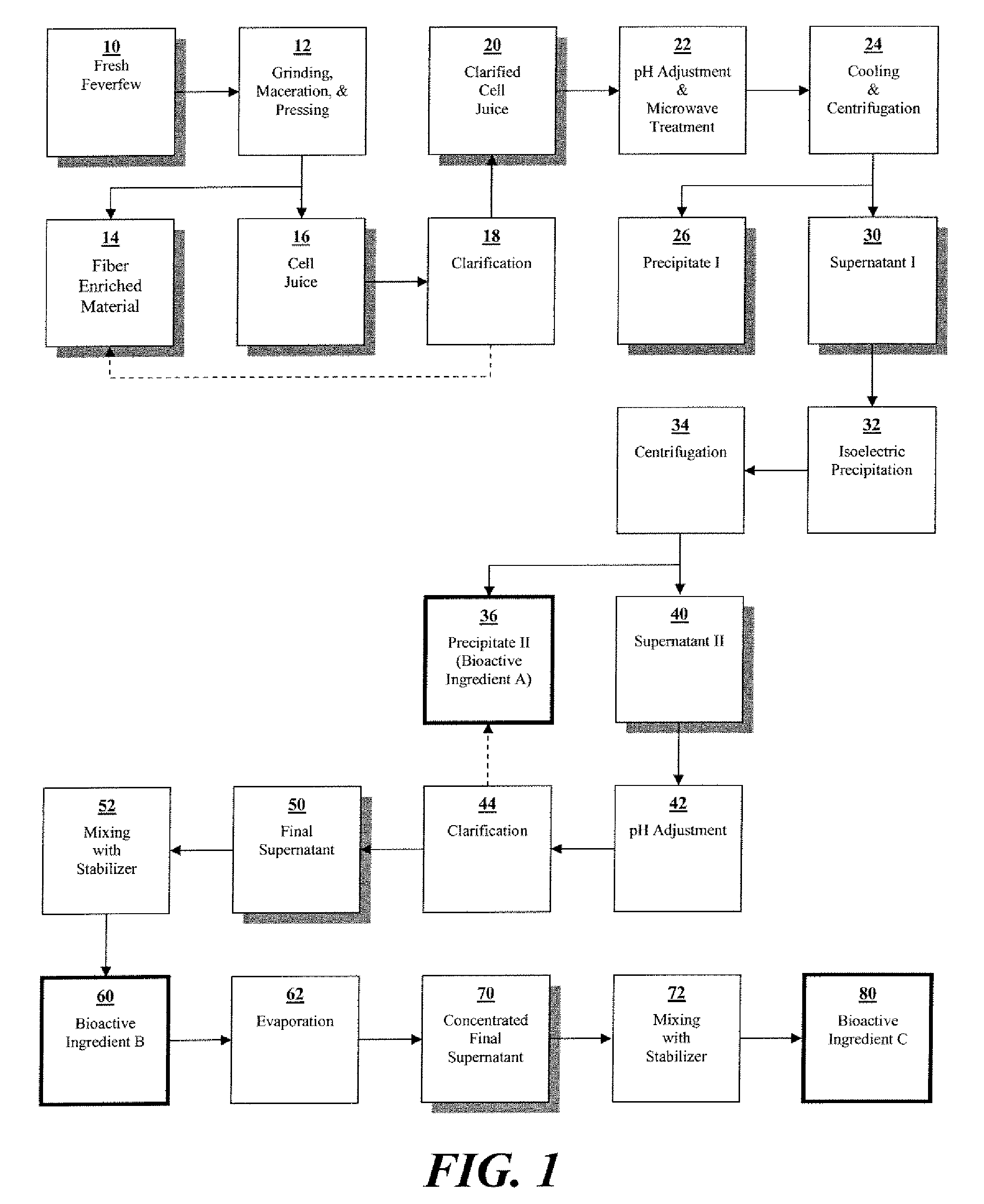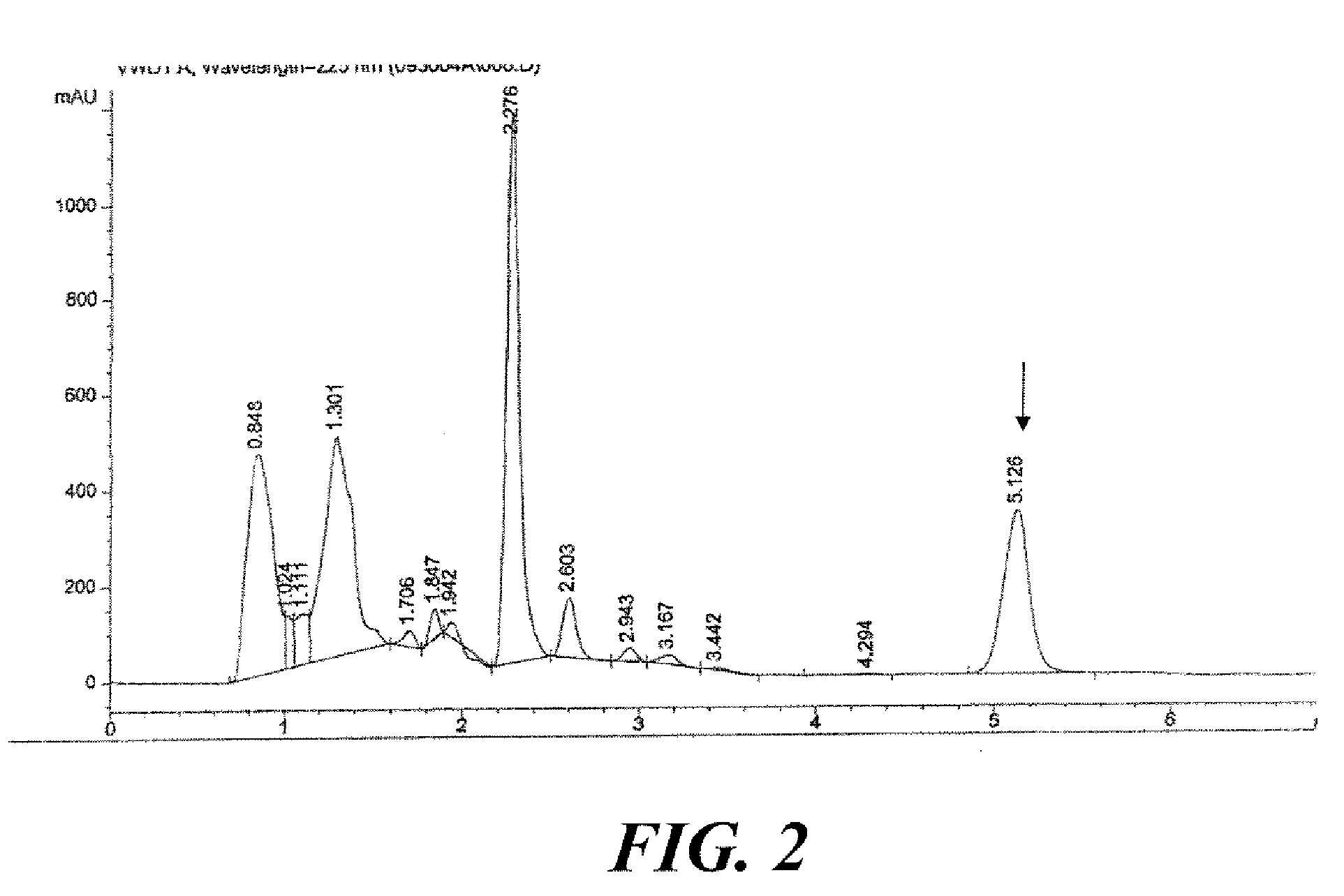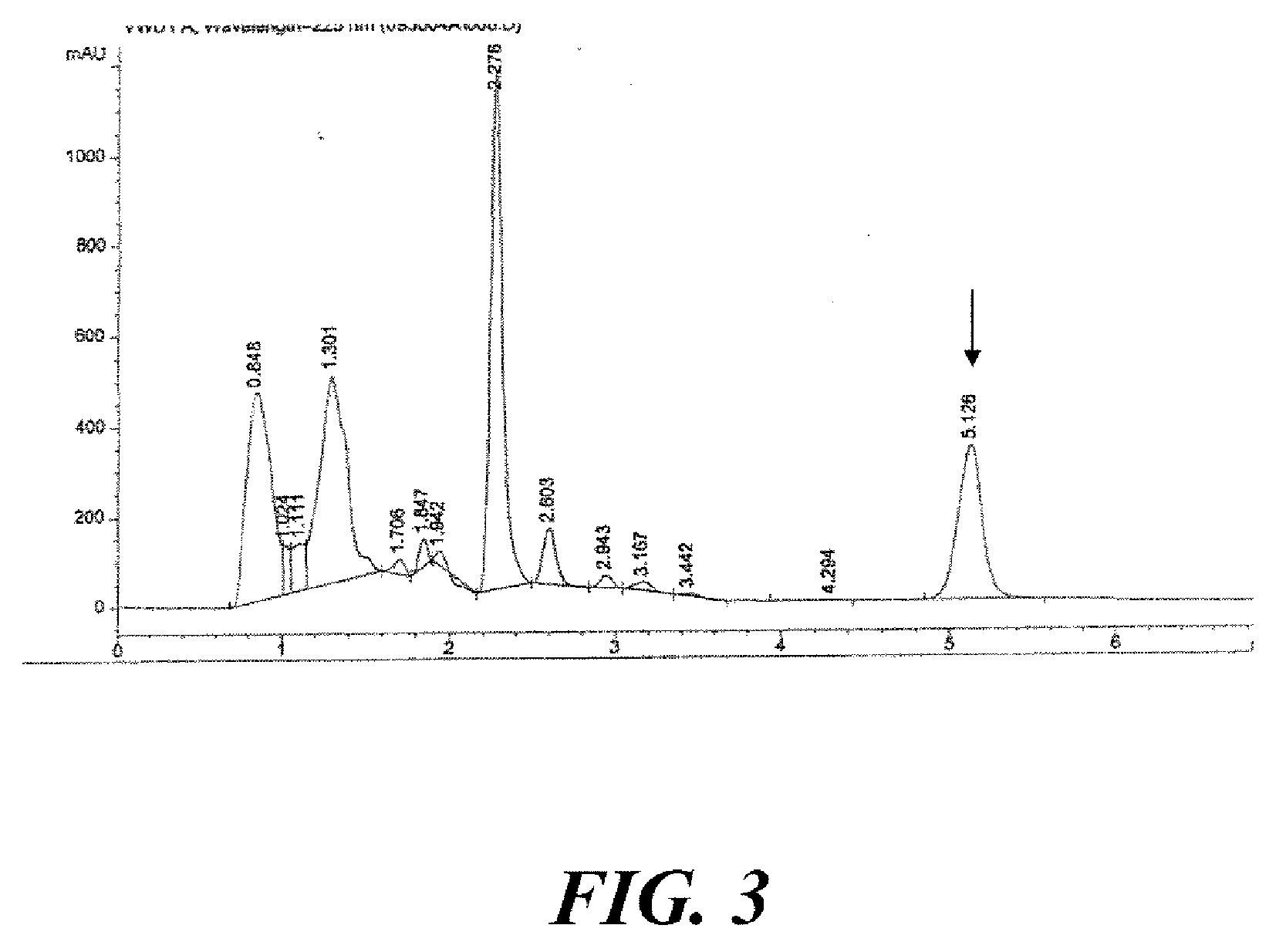Parthenolide free bioactive ingredients from feverfew (tanacetum parthenium) and processes for their production
a technology of bioactive ingredients and feverfew, which is applied in the field of bioactive ingredients, can solve the problems of limited compatibility with many conventional components of skin care formulations, limited applicability of the above extract as an ingredient in skin care products, and insufficiently containing parthenolid
- Summary
- Abstract
- Description
- Claims
- Application Information
AI Technical Summary
Benefits of technology
Problems solved by technology
Method used
Image
Examples
example 1
Preparation of Bioactive Ingredients Derived from Fresh Feverfew
[0108]Below is a description of relevant aspects of one embodiment of the method of the present invention.
[0109]Sufficient amount of fresh feverfew (Tanacetum parthenium) aerial parts were harvested at full bloom stage of growth to yield approximately 100 kg of dry matter. The level of dry matter in the fresh feverfew was measured to be 23.77%, requiring harvesting of approximately 420.7 kg of fresh plant phytomass to yield 100 kg of dry matter. HPLC chromatogram of utilized feverfew is presented in FIG. 2.
[0110]Care was taken to preserve the inherent moisture content of fresh feverfew and to avoid wilting due to moisture loss. The harvesting was conducted in such a manner as to avoid or minimize chopping, mashing, and crushing of the collected fresh feverfew. All steps were completed in the shortest possible period of time. This was done to minimize exposure of the fresh feverfew to sun, high temperature, and other neg...
example 2
Characteristics and Properties of Bioactive Ingredient B
[0127]Bioactive Ingredient B was prepared according to the process described above in Example 1. Analyses of Bioactive Ingredient B were conducted to determine its various physico-chemical, chemical, and microbial characteristics.
[0128]The selected physico-chemical and chemical characteristics of Bioactive Ingredient B are presented below in Table 1.
TABLE 1Physico-Chemical & Chemical Characteristics of BioactiveIngredient BParameterResultsAppearanceYellow-Brown LiquidOdorCharacteristicColor (Gardner Scale)11.5Dry Matter, %6.6Specific Gravity, g / cm31.030Refractive Index, nD1.3112pH4.1UV Maximum, nm269Parthenolide, %
[0129]Bioactive Ingredient B is readily soluble in water in any proportion.
[0130]Table 2 below describes the microbial characteristics of Bioactive Ingredient B. This data demonstrates that Bioactive Ingredient B satisfies skin care industry requirements regarding total plate count, mold and yeast count, and absence o...
example 3
Characteristics and Properties of Bioactive Ingredient C
[0134]Bioactive Ingredient C was prepared according to the process described above in Example 1. Analyses of Bioactive Ingredient C were conducted to determine its various physico-chemical, chemical, microbial, and bioactivity characteristics.
[0135]The selected physico-chemical and chemical characteristics of Bioactive Ingredient C are presented below in Table 5.
TABLE 5Physico-Chemical & Chemical Characteristics of BioactiveIngredient CParameterResultsAppearanceRed-Brown LiquidOdorCharacteristicColor (Gardner Scale)18.5Dry Matter, %19.82Specific Gravity, g / cm31.117Refractive Index, nD1.3770pH4.1UV Maximum, nm255Parthenolide, %
[0136]Bioactive Ingredient C is readily soluble in water in any proportion.
[0137]Table 6 below describes the microbial characteristics of Bioactive Ingredient C. This data demonstrates that Bioactive Ingredient C satisfies skin care industry requirements regarding total late count, mold and yeast count, an...
PUM
 Login to View More
Login to View More Abstract
Description
Claims
Application Information
 Login to View More
Login to View More - R&D
- Intellectual Property
- Life Sciences
- Materials
- Tech Scout
- Unparalleled Data Quality
- Higher Quality Content
- 60% Fewer Hallucinations
Browse by: Latest US Patents, China's latest patents, Technical Efficacy Thesaurus, Application Domain, Technology Topic, Popular Technical Reports.
© 2025 PatSnap. All rights reserved.Legal|Privacy policy|Modern Slavery Act Transparency Statement|Sitemap|About US| Contact US: help@patsnap.com



